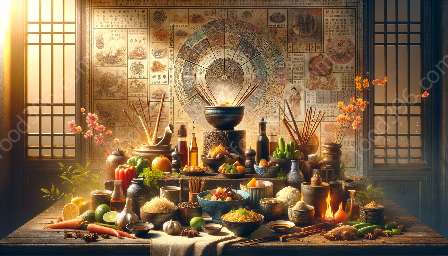Asian fusion cuisine is renowned for its unique blend of culinary traditions and flavors from across Asia. The techniques and methods employed in this style of cooking have been shaped by centuries of history and cultural exchange. In this article, we will delve into the key techniques and methods used in Asian fusion cuisine, their historical significance, and their impact on the wider world of culinary arts.
History of Asian Fusion Cuisine
Asian fusion cuisine is the result of centuries of cultural exchange and trade between countries in Asia and beyond. Historical records indicate that spice routes and trade networks were responsible for the introduction of new ingredients, cooking styles, and culinary practices across Asia.
During the ancient Silk Road trading routes, for instance, spices and food traditions from India, the Middle East, and Central Asia made their way to East Asia, leading to the exchange of cooking techniques and the fusion of flavors. Similarly, the seafaring history of Southeast Asia facilitated the exchange of culinary influences between China, India, the Middle East, and Europe.
Asian fusion cuisine also reflects the impact of colonialism and migration. The colonization of Asian countries by European powers brought new ingredients and cooking methods to the region, leading to further evolution and fusion of culinary traditions. Additionally, migration and diaspora have played a crucial role in the spread of Asian flavors and techniques to other parts of the world, leading to the emergence of a global appreciation for Asian fusion cuisine.
Techniques and Methods in Asian Fusion Cuisine
1. Wok Cooking
The wok is a versatile cooking vessel that is central to many Asian cuisines, including Chinese, Vietnamese, and Thai. It allows for quick and high-heat cooking, which is essential for stir-frying, deep-frying, steaming, and braising. Wok cooking is a fundamental technique in Asian fusion cuisine, as it allows for the quick searing of ingredients while retaining their natural flavors and textures.
2. Flavor Balancing
Asian fusion cuisine is known for its emphasis on achieving a harmonious balance of flavors, including sweet, sour, salty, bitter, and umami. This is often achieved through the use of ingredients such as soy sauce, fish sauce, rice vinegar, and citrus fruits. The technique of flavor balancing is essential in creating well-rounded and complex dishes that are characteristic of Asian fusion cuisine.
3. Ingredient Pairing
The art of ingredient pairing is a key aspect of Asian fusion cuisine. It involves combining traditional Asian ingredients with non-traditional elements to create innovative and unexpected flavor combinations. For example, pairing Japanese miso with Italian pasta or Chinese five-spice powder with French sauces showcases the creativity and adaptability of Asian fusion cooking.
4. Fermentation
Fermentation is a traditional method used in Asian cuisines to transform and preserve ingredients. In Asian fusion cuisine, fermentation techniques such as making kimchi, miso, and pickles are often utilized to introduce unique and complex flavors to dishes. Fermented ingredients add depth and richness to the overall flavor profile of a dish.
5. Fusion Desserts
Asian fusion cuisine extends beyond savory dishes to encompass innovative dessert creations. Techniques such as incorporating Asian ingredients like matcha, red bean paste, and coconut milk into traditional Western-style desserts have led to the emergence of fusion desserts that marry the best of both worlds.
Impact of Asian Fusion Cuisine
The techniques and methods in Asian fusion cuisine have had a profound impact on the culinary world. They have inspired chefs and home cooks to experiment with diverse flavor combinations and cooking techniques, leading to a flourishing of creativity and innovation. This has not only enriched the dining experience for consumers but also contributed to a greater understanding and appreciation of Asian culinary traditions.
Furthermore, the popularity of Asian fusion cuisine has transcended geographical boundaries, leading to the integration of Asian flavors and techniques into mainstream culinary practices around the world. Today, Asian fusion cuisine is celebrated for its ability to bridge cultural divides and create culinary experiences that appeal to diverse palates.
Conclusion
Asian fusion cuisine is a testament to the rich history and cultural exchange that has shaped culinary traditions across Asia. The techniques and methods employed in this style of cooking reflect centuries of cross-cultural influences and have contributed to a global culinary landscape that is dynamic, innovative, and diverse. As chefs continue to push the boundaries of traditional cooking, the evolution of Asian fusion cuisine is set to inspire and delight food enthusiasts for generations to come.

